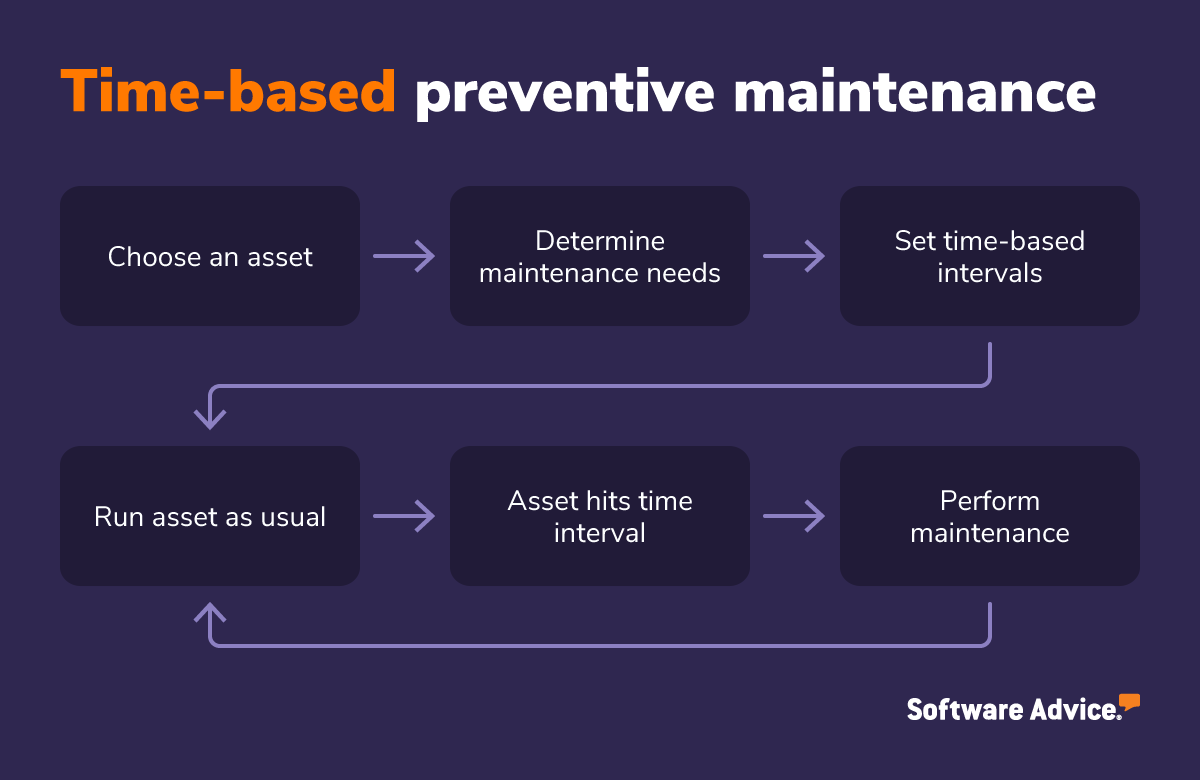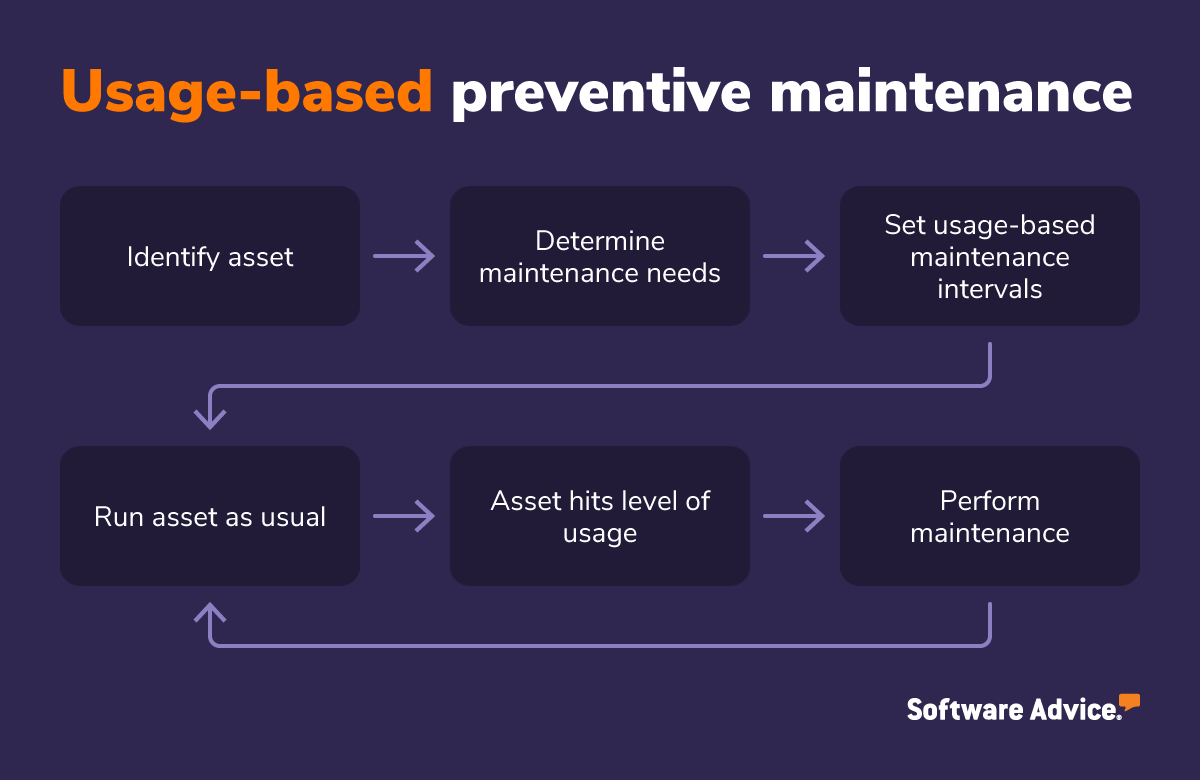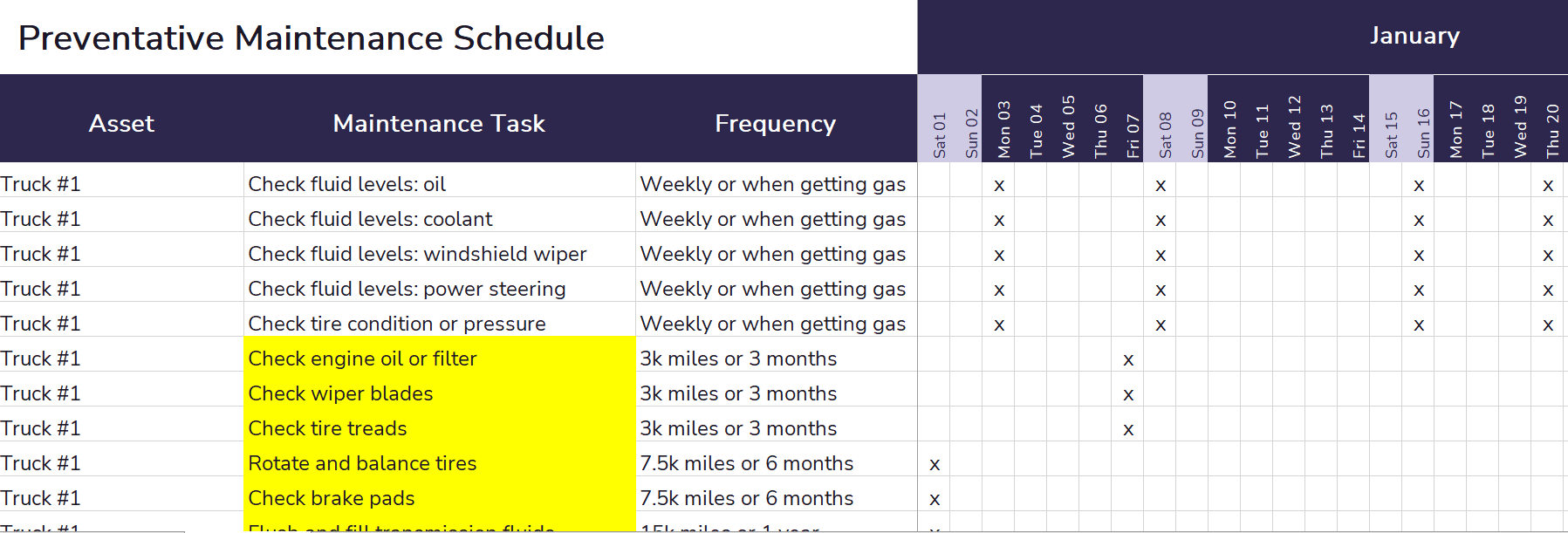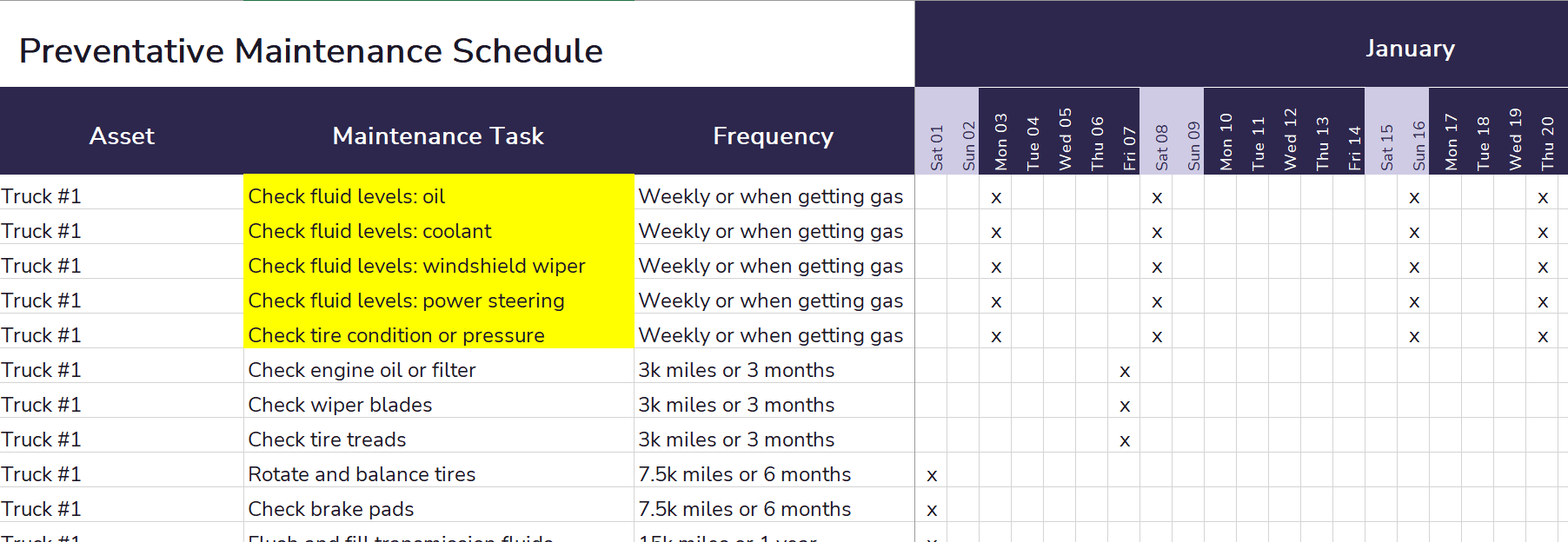Maintain Critical Assets With a Preventive Maintenance Schedule
So you’ve decided to implement a preventive maintenance (PM) program for your small business. Congratulations! You’re on your way to reaping some serious benefits, such as an unheard-of return on investment of 545%.
As a maintenance method designed to keep equipment in working order, preventive maintenance can be quite the undertaking. But it’s worth the effort, particularly if you’re looking to switch from reactive maintenance, where tasks are performed after equipment failure has already occurred. A preventive maintenance schedule, also known as a proactive maintenance or preventative maintenance schedule, will be an invaluable tool for this transition. It will help you stay organized and keep track of maintenance tasks for your most critical assets.
This guide will walk you through the five steps you’ll need to create a preventive maintenance schedule that’s easy to follow and fits your business’s needs. And as a bonus, we’ve included a downloadable template to get you started right away.
Download now: Preventive Maintenance Schedule Template [Free download]
Jump to:
Step 2: Gather information on critical assets to determine their maintenance needs
Step 5: Train employees on your preventive maintenance schedule to ensure a smooth transition
Step 1: Prioritize assets based on criticality
It’s a good idea to start building a preventive maintenance schedule for one or two assets, then use the results to inform your strategy for others. Why? Because tackling more initially can be overwhelming, particularly if your business maintains hundreds or even thousands of assets. Creating a PM schedule for just one or two assets to begin with is not only much less intimidating, but it will help you figure out what’s working and what could be improved when you create preventive maintenance schedules for other assets.
How do you choose which assets to start with? FMX suggests ranking assets based on criticality. A critical asset is one that would be most disruptive if it were to break down, and should thus be prioritized as you come up with a preventive maintenance strategy.
Once you have one or two critical assets in mind, you’ll want to gather information to determine their maintenance needs.
Step 2: Gather information on critical assets to determine their maintenance needs
Now that you know which assets you’d like to create a preventive maintenance schedule for, you’ll want to gather information on those assets. The original equipment manufacturer (OEM) manual is a great place to start: It will contain detailed information about your equipment’s parts, inspection frequencies, and serial numbers so that parts can easily be reordered when needed.
Another important consideration when gathering information on your assets is whether their maintenance needs are time-based or usage-based. A time-based PM schedule involves scheduling maintenance tasks based on the time of their last occurrence. The image below shows what a time-based preventive maintenance workflow might look like.

Example of a time-based preventive maintenance workflow
Usage-based preventive maintenance, which can also be described as predictive maintenance, involves scheduling maintenance tasks based on real-time usage data from equipment sensors. Usage can be measured in hours, kilometers, flow, or temperature, to name a few examples. The image below shows what a usage-based preventive maintenance workflow might look like.

Example of a usage-based preventive maintenance workflow
If you’re uncertain whether an asset would be better served by a time- or usage-based PM schedule, start with time-based. Then, if you’re over-maintaining, switch to usage-based. Preventive maintenance software is useful with either type of schedule because you can set reminders to notify your team once an asset has reached a set amount of time or usage between maintenance tasks.
When you’ve determined whether your most critical assets’ maintenance needs, as well as whether their PM schedules need to be time-based or usage-based, you can plan long-term and short-term tasks for each asset.
Step 3: Plan long-term tasks for each critical asset
Long-term preventive maintenance tasks include routine maintenance that is necessary to perform every once in a while, but not every day. Although these will vary according to the needs of each asset, here are some examples of what a long-term PM task might look like:
Inspections
Greasing and lubrication
Oil or air filter changes
Chain or belt adjustments
Part replacement and/or repair
The image below shows examples of long-term maintenance tasks within our preventive maintenance schedule template, which you can download and use for your own assets:

Examples of long-term maintenance tasks within our PM schedule template
Once you have an idea of which maintenance tasks you’d like to schedule over the coming months, you can narrow your focus to more short-term tasks.
Step 4: Plan short-term tasks for each critical asset
Short-term preventive maintenance tasks are the ones your team will perform on a more frequent basis such as every day or every week. They’re the ones that will have more serious consequences if they’re not performed frequently.
For instance, a significant change in temperature or air pressure should probably be addressed with urgency, while an oil or air filter change can wait unless there are indications of a serious problem. In the same way, cleaning equipment parts becomes a much bigger task if it’s delayed, unlike an inspection, which involves the same amount of work regardless of when it’s performed.
Here are some examples of short-term preventive maintenance tasks:
Cleaning
Taking and recording measurements such as pressure and temperature
Verifying that parts are working properly
The image below shows examples of short-term maintenance tasks within our schedule template:

Example of short-term maintenance tasks within our PM template
Step 5: Train employees on your preventive maintenance schedule to ensure a smooth transition
Once you’ve planned long-term and short-term maintenance tasks for your most critical assets, it’s important to train your maintenance team on their assignments. Ensure that each team member knows what they’re responsible for and how to perform each preventive maintenance task correctly.
In addition to notifying your team when maintenance needs to be performed, preventive maintenance software can help you schedule and assign preventive maintenance tasks, track asset performance, and submit a work order for equipment repair if any reactive maintenance is needed. It can also provide you with an easily accessible mobile version of your preventive maintenance checklist for each asset.
Along with training your team on their maintenance tasks, make sure they know how to use any software platform you select to enhance your maintenance program.
Take your preventive maintenance program to the next level
Once you get the hang of preventive maintenance scheduling for your one or two most critical assets, you can start tracking the results of your preventive maintenance program on your business’s bottom line and operations. If your program has been a success, you can start expanding plans to include other assets. If parts of your program need to be adjusted, such as the frequency or type of maintenance, you can make changes and reassess.
To get started on your own preventive maintenance plan, browse our list of preventive maintenance software.